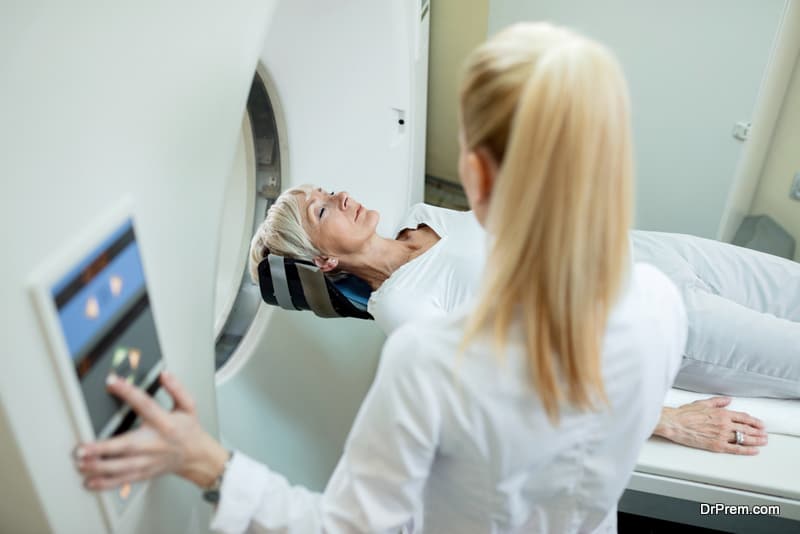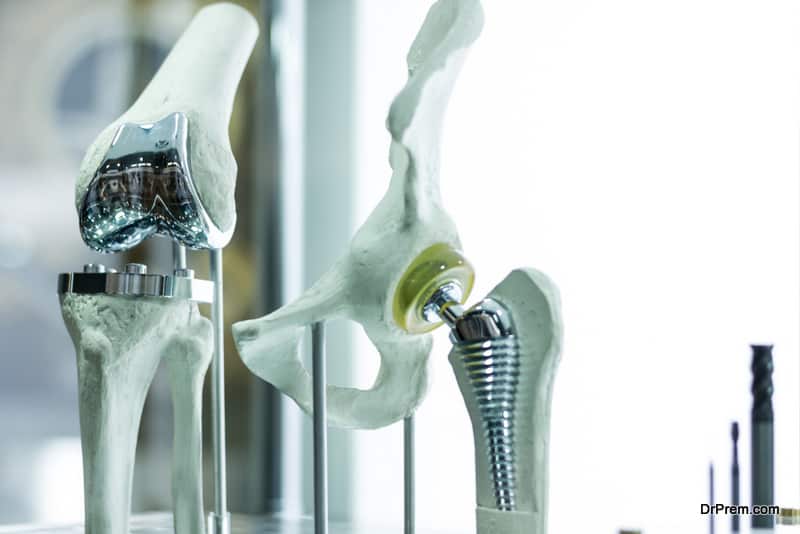Today people can easily travel around the world and take advantage of cost effective quality medical care, many low destinations with excellent medical facilities attracting increasing number of medical tourists. Consequently medical tourism industry is bound to become a multibillion-dollar industry in the time to come. By 2020, medical tourism will have a transformation from a niche segment to mainstream.
The future of medical tourism factoring in the stakeholders’ perspective and other contributory factors
-
Startups to transform medical tourism to mainstream
-
High time for multibillion dollar Medical Tourism Industry – Visa suggests industry to grow by 25% annually
-
Senior citizens to provide required impetus to Medical Tourism
-
Medical Tourism not an undervalued industry anymore
-
Medical Tourism Index too thinks along similar lines
-
India receives the most number of the US based medical tourists
-
Factors that contribute toward a CAGR of 25.5% through next decade for North America Outbound Medical Tourism
-
Outbound medical tourism stats of US
-
Factors contributing heavily to outbound medical tourism in North America
-
Market segmentation in different treatment procedures
-
The proliferation of medical tourism service facilitators
-
Medical tourism and stakeholder’s perception of the global healthcare industry
Healthcare providers in major medical tourist destinations are following various strategies such as mergers, collaborations and expansion in order to grab the maximum share of rapidly growing medical tourism market. ASPAC and India are leading the race. Asia has become the dominant player in medical tourism industry.
The situation is expected to be the same in near future as well. India and Thailand not only provide a high number of medical professionals but also have some quality hospitals comparable to the best in the world. India has an impressive three percent share in the global medical tourism industry. Traditional holistic treatments add yet another advantage to Asia’s medical industry.
Startups to transform medical tourism to mainstream:
Bloomberg reports PwC prediction of medical tourism reaching $125 billion by 2021. This growth will not be driven by aesthetic procedures or dental implants. Global medical travelers would look for more expensive and complicated treatments related to cardiac health, orthopedics and oncology that demand longer recuperation period.
A growing number of startup companies from Berlin to Bangkok are offering all-inclusive support service to help medical travelers make the best selection according to their requirements. Websites loaded with information are user-friendly with a varied range of selection options. This may include destination selection, appointment fixing, booking of flight and accommodation and even vacation packages for recuperation.
Wellness Tourism Worldwide has issued the main findings from Phase 2 of the “4WR: wellness for whom, where and what?” project. The objective of this research is to identify the main global and regional trends that experts envision in health-motivated travel by 2020. Wellness tourism is one of the fastest growing forms of international and domestic tourism. This trend is not to change in the coming 5-10 years.
High time for multibillion dollar Medical Tourism Industry – Visa suggests industry to grow by 25% annually
VISA and Oxford Economics posted an extensive research report dubbed Mapping the Future of Global Travel and Tourism that is sure to bring the broadest smile on the faces of entrepreneurs, agencies, and companies belonging to Medical Tourism segment. The report specifically hints at phenomenal increase in number of medical tourists in the last decade, which is bound to head northward henceforth. According to this report, the global medical tourism industry will grow by up to 25 percent every year over the next decade. Already a multibillion industry, this specific market segment is now set to attract the attention of senior citizens aged 65+ who focus more on their health instead of saving money.
Senior citizens to provide required impetus to Medical Tourism
Well, for obvious reasons, senior citizens require more care in terms of health services and better yet affordable means of conveyance. VISA foresees a tremendous increase in the number of travelers aged 65+ in the next decade, which is expected to have a lion’s share in global medical tourism. If the figures mentioned in the report are something to go by, senior travelers will constitute an impressive 13 percent chunk of all international travelers. With their inclination to seek medical treatments overseas, it is high time for medical tourism companies, facilitators and other players to up the ante to live up to their expectations.
Medical Tourism not an undervalued industry anymore
As of now, Medical Tourism is a multibillion dollar market (earlier claimed to be $439bn by Visa’s research report Mapping the Future of Global Travel and Tourism) that is thriving to achieve more than 25 percent growth per year. Therefore, those apprehensive about the scope of medical tourism do not need more clarification for sure. The industry enjoys the patronage of around 11 million medical tourists annually; thus, allowing other associated industries to build their fortunes on their exploits. Such incredible scope for growth further benefits patients in numerous ways. Since, better healthcare facilities, hospitals, clinics, and medical services providers are joining the cause to provide higher quality medical care and services to end users.
Now, the cost of cross-border medical treatment has reduced, which further enables medical tourists to spend their savings on exploring attractive destinations in the country they are visiting. Patients, who otherwise find it difficult to get recommended medications and treatments in their home country, now travel overseas to get them. Accordingly, in the next decade, the share of world’s population that will travel internationally for medical treatments and medications now reads 3-4 percent.
The report further suggests that at current growth rate, the medical travel market is all set to soar to a humongous $3 trillion by 2025. Now, these figures are undeniably impressive enough to dispel the least iota of doubt from the minds of those who thus far undervalued medical tourism industry.
Medical Tourism Index too thinks along similar lines
The industry-leading journal, Medical Tourism Index (MTI), carries out extensive research every year to source relevant and facts-based info from diverse reliable resources on the state of Medical Tourism worldwide. The Global 2016 Medical Tourism Index released by the journal reveals that, as of now, individuals belonging to 45-54 age group constitute 18.5 percent share, while those aged 65+ owns a sizeable 16.7 percent share. Individuals belonging to White people are the most active bunch of medical tourists, with their share reading 66.1 percent.
The report further states that in terms of destination environment and the ease of getting quality healthcare, Canada and the United Kingdom bag the top two positions; however, in terms of market share of healthcare travel spending, the US is dominating its peers for now. Nonetheless, MTI’s findings reveal that China will fall short of its demand for better healthcare in the next decade, and accordingly, will dethrone the US.
India receives the most number of the US based medical tourists
Considering the fact that the United States owns the largest market share of healthcare travel spending, it is interesting to know where those patients travel to get their medical treatments and medications. Well, India is the most favorite medical tourism destination of the United States based medical tourists. In terms of patients visiting India, MTI gives 75.94 points to India, whereas Colombia follows it closely by getting 74.96 points. India, however, needs to put in great efforts to improve the quality of healthcare facilities and services. According to the report, Israel tops the chart while getting 81.60 point, whereas India is at the third position with 77.10 points.
Factors that contribute toward a CAGR of 25.5% through next decade for North America Outbound Medical Tourism
The ever increasing outbound medical tourism from North America is the main contributor to the sharp growth of global medical tourism market. Outbound medical tourism implies when people look for better and affordable medical treatment facilities beyond their home country. In North America, the percentage of outbound medical tourism has been the highest followed by Canada and European Union countries.
It is this exodus from highly developed economies that has seen the boom of niche medical tourism sector since past one decade or so. As revealed by a recognized market analyst (Future market insight), the outbound medical tourism of North America that has experienced a market valuation of US$15.53 billion in 2016 is expected to see a monstrous valuation growth of US$150.36 billion by 2026.
Outbound medical tourism stats of US
In 2007, about 500,000- 750,000 US citizens opted for medical tourism spending almost USD$2.1 billion. In fact, the country has been the trendsetter in initiating medical tourism.
Thailand receives about 44% of North American medical tourists while Latin America receives 38% and other countries like India receives 18%.
It is rather an unusual phenomenon that while other developing economies are strengthening their exchequer capitalizing inbound medical tourism, North America is experiencing a reverse scenario. The reasons are quite obvious.
Factors contributing heavily to outbound medical tourism in North America:
The fact that North America being one of the most advanced countries in medical treatment facilities is seeing maximum outbound medical tourism stems from a number of long-ingrained factors.
-The healthcare system of North America lies mainly in the private hands which increase the medical treatment cost.
-As per the study released by a reputed Medical Tourism Journal, health care service cost in North America is 85% higher than those offered in Latin American and other developing nations like India.
-The rise in North America outbound medical tourism is further aggravated by the fact that about 14% of Americans below 65 years are uninsured and 7% are underinsured. 54% of the population is covered by private insurance and only 25% come under public health insurance. Therefore, uninsured population and high deductibles contribute a huge fraction in outbound medical tourism.
-Health insurance has its other limitations as well. Dental and aesthetic treatments are very expensive in US and most of them are not covered by health insurance. It is to be noted that a substantially high percentage of US citizens suffer from poor dental and skin health.
Therefore, North Americans seeking beyond the border high-quality but affordable dental and cosmetic treatments are quite prevalent. As per the stats of International Society of Aesthetic Plastic Surgery, the US was the most lucrative market for cosmetic treatments in 2015.
-The rise in ageing baby boomer population is another driver to contribute in the North America’s outbound medical tourism.
-Long waiting list is another big issue in the US that is forcing people to look beyond the borders for a quick medical support especially in case of critical ailments.
-Increasing spending power and heightened wellness awareness are also driving more people to opt for non-conventional treatments which can be punched well with a relaxing vacation.
Market segmentation in different treatment procedures:
North America outbound medical tourism services market can be segmented into the following sectors (as per Future Market Insight report):
-Cosmetic Surgery Treatment with approximate valuation of $3760.9 million by 2016
-Dental Treatment segment to witness a CAGR of 27.2% by 2026
-The cancer treatment segment to witness a CAGR of 22.0% by 2026
-The orthopedic treatment segment to create a valuation of $1658.9 million in 2017.
Other segments to contribute in the outbound medical tourism growth are treatments related to cardiovascular ailments, orthopedics, fertility issues, weight loss, neurology and spinal surgery.
The proliferation of medical tourism service facilitators:
The above factors are well conducive to the proliferation of medical tourism service facilitators in the US. It is notable that a good number of such facilitators and coordinators have been able to carve a global niche providing excellent scratch -to -end support to the outbound medical tourists.
Travelling to a distant land for medical purpose is way different from a conventional vacation. Medical tourism has its own share of limitations as well. Things can seriously go wrong in case the patient lands in unsafe hands. Language barrier, malpractices in destination countries, lack of proper follow up after treatment and spread of drug resistant bugs and infections are serious impediments that need to be addressed properly.
Assessing the probable hurdles and requirements of the outbound medical tourists, these facilitators have created a sound base operating throughout the globe. They maintain an effective coordination with the destination healthcare givers that help in providing an all round support to the patient.
North America outbound medical tourist service market is divided into two regions. One is the US and the other is Canada. Of the two, the US market is projected to grow appreciably registering an incredible CAGR of 25.7% by 2026.
Though the above growth projection appears to be attainable but the medical-tourist service sector has more things to consider. To cater to the growing outbound medical tourist market, they need to adopt advanced service packages ensuring zero hassle and 100% safety to the customers within a reasonable cost.
Medical tourism and stakeholder’s perception of the global healthcare industry
Medical tourism is fast becoming a multi-billion dollar industry recognized globally by several countries. The concept of saving money by getting treated at a foreign destination sounds lucrative for patients who cannot afford the increasing healthcare costs in Western countries like the US and the UK. More and more developing nations are also entering the medical tourism market by encouraging public and private firms to invest in the sector.
However, not everyone is happy with the industry and its benefits. Potential stakeholders of the medical tourism and healthcare industries are apprehensive about the negative impacts of medical tourism on developing nations, one of them being the increased movement of doctors from public to private health sectors.
Accordingly, several interviews were conducted with potential stakeholders in the medical tourism and healthcare industries. These stakeholders came from private and public health care systems, allied businesses, government organizations and even civil society sectors. A thematic analysis of the stakeholder perception of the healthcare industry was developed with the answers obtained in these interviews.
The thematic analysis that was developed aimed to focus on three main points.
- The perceptions/expectations stakeholders have of existing as well as future plans and patterns for healthcare resource usage by the medical tourism facilities in the destination. Indications of possible growth in this area in the coming years were put forward.
- It includes the positive aspects of medical tourism on existing healthcare resources as well as access to healthcare in public systems. Some of the benefits anticipated by the stakeholders include superior quality control, increased training opportunities, and retention of health workers in the provider destination.
- It also covers the negative aspects of medical tourism on existing healthcare resources and the access to healthcare in public systems. Some of the negativities anticipated by stakeholders include inequities in healthcare, longer waiting periods and shift in planning priorities in the medical tourism sector.
The thematic analysis also saw the formation of two opposition groups. While stakeholders connected to the medical tourism sector focused more on the positive impacts of medical tourism on the healthcare sector, stakeholders connected to the public health equity and healthcare systems focused more on the negative impacts of medical tourism on existing healthcare systems. How these negative aspects would be taken care of in potential medical tourism destinations is still unclear.
Medical tourism destinations wishing to grow in the highly competitive market would need to compare the regulatory frameworks of different medical tourism destinations in order to bring together their positives points and create a unique framework that would minimize the negative impacts and increase the benefits. Only then, would these countries be able to develop a sustainable medical tourism business that would benefit all the parties involved.


















